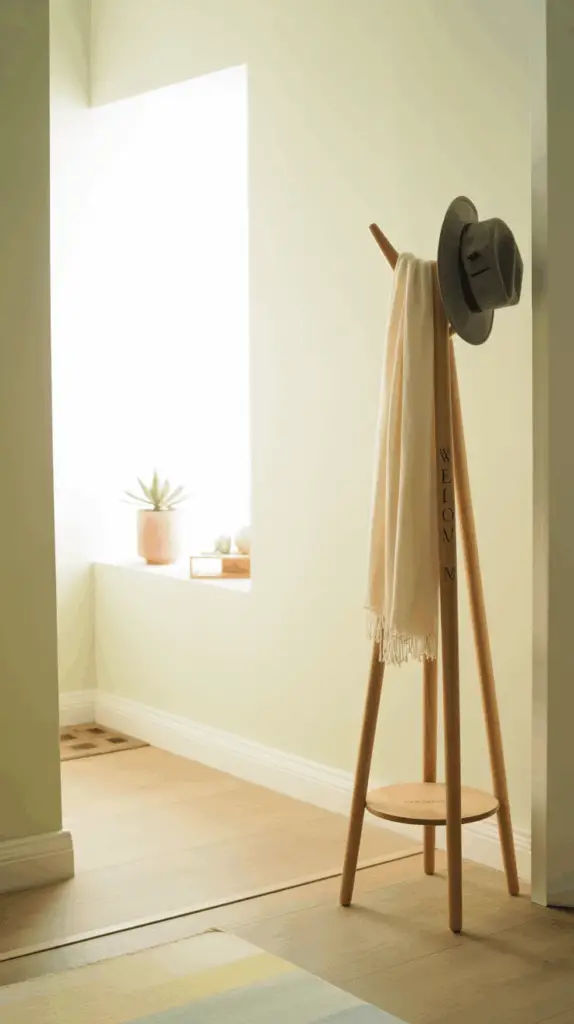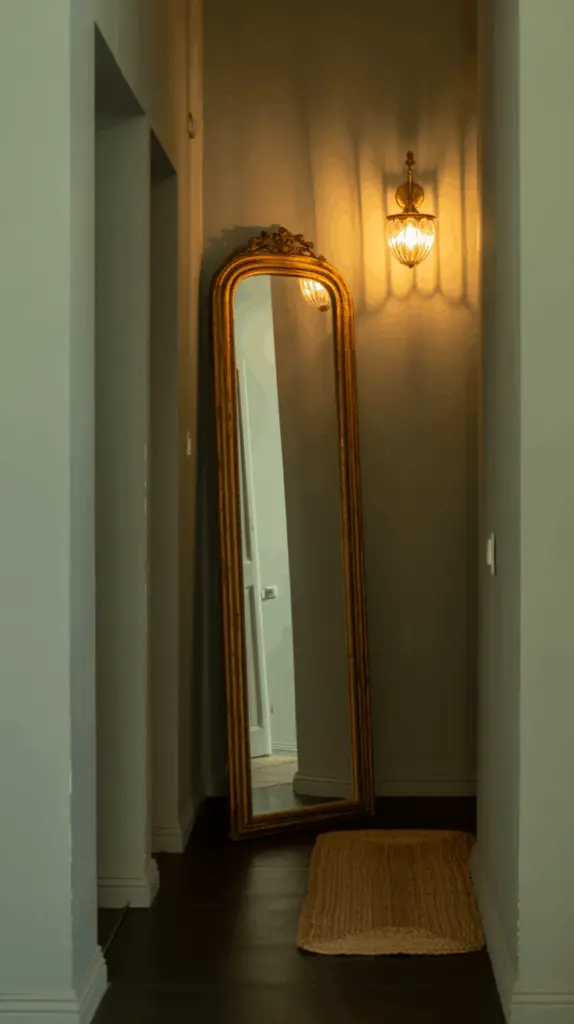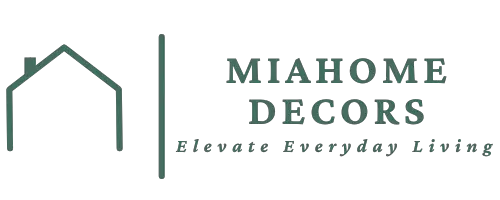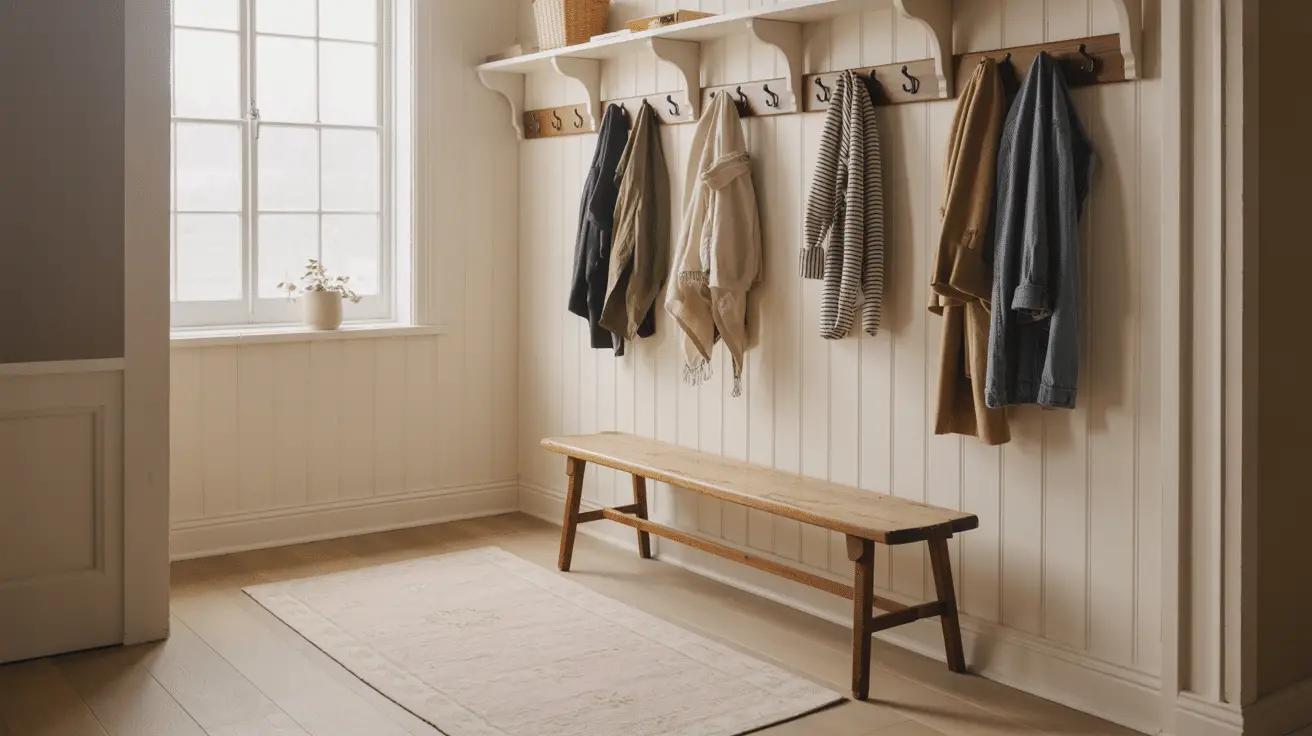How to Make a Small Entryway Look Bigger in Easy Steps: Space-Saving Tricks that Work
Table of Contents
Introduction
The entryway is the first impression your home makes—but when that space is small, it can feel more like a cluttered closet than a grand welcome. In fact, many homeowners overlook the power of their entry because of its limited size, yet it holds so much design potential. According to interior design experts, even a compact foyer can be transformed into a functional, stylish zone with just a few smart choices.
A small entryway doesn’t have to mean small impact. With the right layout, lighting, and decor, you can instantly make this tight space feel open, airy, and intentional. It’s not about adding more, but about doing more with what you have—mirrors that reflect light, colors that expand the eye, and furniture that pulls double duty.
In this post, we’ll walk you through easy, practical steps to make your small entryway look significantly bigger—without renovation or a big budget. From visual tricks and lighting to color theory and storage solutions, you’ll get real-world ideas that deliver high style in tight quarters.
Let’s unlock the hidden potential of your entryway and give it the spacious, inviting energy it deserves.
Choose the Right Color Palette to Expand the Space
Color is one of the easiest ways to visually enlarge a room. In a small entryway, choosing the right tones can mean the difference between cozy and cramped. The goal is to create an illusion of openness through strategic use of light, soft hues.
Soft whites, creamy beiges, cool greys, and pale blues are excellent choices for walls. These colors reflect light, creating the perception of more space. High-gloss or satin finishes on paint can also help bounce natural or artificial light around the area, further amplifying brightness.
That said, don’t shy away from color entirely. You can still introduce moodier tones like sage green or powdery lavender as accents in art, rugs, or furniture. What matters most is keeping the overall palette consistent and light, which visually unifies the space.
Paint the ceiling the same color as the walls or just a touch lighter—this avoids harsh contrast and makes the room feel taller. If your entry includes doors or molding, keep them in the same tone as the walls to eliminate visual boundaries.
Table: Entryway Color Planning Guide
| Surface | Color Tip | Effect on Space Perception |
| Walls | Soft neutrals or pastels | Creates brightness and openness |
| Ceiling | Lighter than or same as walls | Increases perceived height |
| Trim & Doors | Match to wall color | Reduces visual clutter |
| Accents | Use limited, tonal contrasts | Maintains flow and unity |

Use Mirrors Strategically to Reflect Space and Light
Mirrors are perhaps the single most powerful tool for making a small entryway feel larger. Not only do they reflect natural and artificial light, but they also create the illusion of more depth and space.
Placing a large mirror opposite or adjacent to a doorway reflects both the entry path and any light coming in, visually doubling the space. For narrow entryways, a floor-to-ceiling mirror leans against the wall to add both elegance and expansiveness.
Choose mirrors with slim or no frames to maintain an airy look. If you prefer a decorative mirror, opt for one in a metallic or neutral tone that complements the rest of your color palette.
Even small mirrors grouped in a gallery-style arrangement can add dimension. Just ensure they’re hung in a cohesive pattern to avoid visual clutter.
Lighting and mirrors are a dream team—combine both by placing a mirror near a sconce, pendant light, or window. The reflected glow creates ambiance while visually stretching the room.
Table: Mirror Placement Strategies for Small Spaces
| Mirror Type | Placement | Visual Benefit |
| Oversized Wall Mirror | Across from entry door | Creates depth and light bounce |
| Tall Leaning Mirror | Against narrow wall | Adds vertical height |
| Round Decorative Mirror | Above console table | Balances hard lines with curves |
| Mirror Cluster | Adjacent to lighting | Reflects and softens the space |
Invest in Slimline and Multi-Functional Furniture
Bulky furniture can overwhelm a small space, making it feel cramped rather than cozy. The solution? Choose furniture with a slim profile and built-in functionality.
A narrow console table with drawers offers both surface and hidden storage. Floating shelves or wall-mounted ledges can serve as catch-all stations without occupying floor space. Consider a small bench with lift-up storage for shoes or seasonal accessories—it acts as both seating and storage.
Hooks and wall-mounted racks are ideal for vertical storage. Opt for sleek finishes like matte black, brushed brass, or painted wood to suit your decor style. Keep everything proportionate to the space—a dainty stool may be more effective than a full bench in extra-tight corners.
Think vertically, not just horizontally. Stackable bins, wall cubbies, and tall shelving units draw the eye upward and free up floor space.
Table: Functional Furniture Ideas for Small Entryways
| Furniture Piece | Functionality | Space-Saving Feature |
| Narrow Console Table | Surface and drawer storage | Slim footprint |
| Storage Bench | Seating + hidden compartment | Multipurpose |
| Wall Hooks or Pegs | Vertical coat/bag hanging | Frees floor area |
| Floating Shelf | Display + drop zone | Mounts flush to the wall |

Maximize Lighting for Airiness and Warmth
A well-lit entryway instantly feels more spacious. Without sufficient lighting, even a light-colored space can seem enclosed and uninviting. The key is layering light in a way that adds both visibility and atmosphere.
Start with overhead lighting that suits the scale of the room. A flush mount or small pendant light can create a stylish statement without overwhelming the ceiling. For higher ceilings, a mini chandelier adds vertical interest.
Wall sconces on either side of a mirror or doorway can help stretch the room horizontally. If you have a narrow wall or hallway-style entry, consider a light bar or track lighting for even illumination.
Natural light should be leveraged whenever possible. Remove heavy window treatments from nearby doors or sidelights, or replace them with sheer fabric that diffuses light gently.
Warm-toned bulbs (2700K–3000K) provide a welcoming glow that softens corners and enhances your decor. Avoid harsh daylight bulbs, which can make a small area feel sterile.
Table: Entryway Lighting Breakdown
| Lighting Element | Best Use Case | Style Tip |
| Overhead Fixture | General lighting | Choose a semi-flush mount for elegance |
| Wall Sconces | Accentuate mirrors/artwork | Install at eye level for best effect |
| Table Lamp | On console for cozy ambiance | Use soft fabric shades |
| Natural Light | Through doors or sidelights | Use sheer curtains or none at all |
Use Flooring and Rugs to Define and Stretch the Space
Flooring is an often-overlooked design element in a small entryway, yet it plays a powerful role in perception. The right rug or pattern can make the space feel longer, wider, or more cohesive.
Choose a rug that fits the width of the entry but leaves a border around the edges—this framing visually expands the floor. Runners work well in long, narrow entries, while circular rugs soften square spaces and add a sense of motion.
Pattern matters. Vertical stripes or herringbone flooring layouts elongate the room. Light-toned wood or tile reflects light better than dark flooring, helping the area feel more open.
Layering rugs is another effective way to create texture without bulk. For example, a jute rug beneath a patterned kilim runner introduces visual interest while staying low profile.
If your home has consistent flooring throughout, it naturally helps the entryway flow into the next room. If it doesn’t, consider transitioning to a similar tone or texture to create continuity.
Table: Rug and Flooring Strategy Guide
| Floor Element | Entryway Effect | Design Tip |
| Light-Toned Flooring | Brightens and enlarges space | Use satin finish for soft reflection |
| Long Runner Rug | Visually elongates hallway | Anchor with rug pad to prevent slips |
| Round Accent Rug | Softens sharp angles | Use bold color for a focal point |
| Herringbone Pattern | Adds movement and interest | Ideal for tiled or wood floors |
Declutter with Style: Storage that Looks Good and Works Hard
Clutter is the biggest enemy of a small space. But instead of hiding everything away, use stylish storage solutions that are both functional and decorative.
Baskets under benches or console tables provide hidden storage for shoes, umbrellas, or pet leashes. Opt for woven textures or neutral tones to keep them feeling like part of the design rather than utilitarian bins.
Wall-mounted mail sorters, catch-all trays, and entry organizers help you manage everyday items while keeping surfaces clean. Choose coordinated materials—wood, metal, or acrylic—to maintain a cohesive look.
Keep your storage visible but tidy. Open shelving, when styled with intention, can hold everything from hats to keys while still looking curated. Combine practicality with aesthetics: hooks shaped like leaves, floating shelves with sculptural brackets, or fabric bins that match your rug or pillows.
Table: Small Space Storage Solutions
| Storage Item | Purpose | Style Note |
| Woven Baskets | Shoe or item concealment | Choose lidded for a cleaner look |
| Entry Tray | Catch-all for keys/mail | Use marble or wood for elegance |
| Floating Shelf w/ Hooks | Coat hanging + decor space | Paint to match wall or contrast softly |
| Open Shelf Cubbies | Shoes, decor, or bags | Add labels or uniform bins |
Conclusion
A small entryway doesn’t mean limited design potential. With the right color palette, clever furniture, thoughtful lighting, and well-placed accents, you can transform even the tiniest entrance into a welcoming, airy space. The secret lies in using design principles—light, reflection, scale, and simplicity—to create the illusion of openness.
Each element should serve both a functional and aesthetic purpose. Mirrors bounce light, storage hides clutter, and rugs guide the eye. Most importantly, these strategies don’t require a full renovation—just intention, creativity, and a clear plan.
By implementing these easy steps, you’ll find that your entryway doesn’t just look bigger—it feels bigger. And that feeling makes all the difference.

